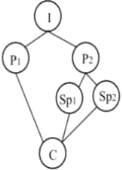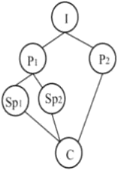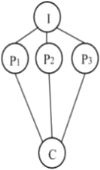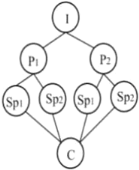-
The belief that new technologies are causing the death of work is the idea that never goes away. Despite evidence to the contrary, we still view technological change today as being more rapid and dramatic in its consequences for work than ever before. But this is nothing new. People have always viewed the technological changes that take place during their lives the most dramatic and dangerous that ever happened in history.
In the 1930s, the British economist(经济学家)John Maynard Keynes predicted the widespread use of electricity would produce a world where people spend most of their time doing nothing. In the United States during the 1960s, the government repeatedly investigates fears that automatic machines would permanently reduce the amount of work available, In 1988, one Australian historian claimed that at least a quarter of the workforce would be without jobs within 10 years because of computers.
Of course, none of these disasters came to pass in the United Kingdom, the United States and Australia, or anywhere else.
Yet today, we are seeing the return of these predictions, with some experts claiming the world of work once more undergoing radical and unprecedented change. They argue that robots and other workplace technologies are causing a reduction in the total amount of work available, or are bringing a more rapid pace substitution of machines for humans has been seen previously.
But there is a little evidence to support such beliefs, Statistics show that the percentage of people in work, the number of hours they work, and how frequently they change jobs have remained remarkably constant over the past 20 years.
This stability should not come as a surprise, There are good reasons why we should not expect new technologies to cause the death of work. New technologies always cause job losses, but that is only part of the story. What also needs to be understood is how they increase the amount of work available.
One way this happens is through the increases in incomes that accompany the use of new technologies. With the introduction of these technologies, good and services can be produced faster, which results in higher real incomes for workers. Higher incomes then increase demand for other products and consequently more workers are needed to make them. Additionally, while new technologies are likely to substitute for some types of workers, they will also increase demand for other types of workers, especially those with higher level skills and expertise.
So, the end of work is no closer today than at any time in the past. But there is still a need to keep disproving the prediction, to reduce people’s fears.
1.What is the function of the second paragraph?
A. To explain the importance of developing new technology.
B. To give historical examples of unnecessary fear about new technology.
C. To argue that technological dangers are becoming more serious.
D. To show how technology affected employment in the past.
2.How can employment statistics over the past 20 years best be described?
A. Confusing B. Reliable
C. Stable D. Variable
3.According to paragraph 7, why does demand for products often increase after new technology is introduced?
A. Productivity improvements help raise workers’ salaries.
B. There is more demand for new skills in the economy.
C. There are more goods for people to choose from.
D. Higher quality goods at lower prices encourage consumption.
4.What is the author's opinion about the introduction of new technology?
A. It does not have an effect on most people’s jobs.
B. Its danger to peoples employment possibilities is overstated.
C. It usually leads to a significant increase in employment.
D. Its benefits are usually not worth the introduction.
高二英语阅读理解困难题查看答案及解析
-
The belief that new technologies are causing the death of work is the idea that never goes away. Despite evidence to the contrary, we still view technological change today as being more rapid and dramatic in its consequences for work than ever before. But this is nothing new. People have always viewed the technological changes that take place during their lives as the most dramatic and dangerous that ever happened in history.
In the 1930s, the British economist(经济学家) John Maynard Keynes predicted the widespread use of electricity would produce a world where people spend most of their time doing nothing. In the United States during the 1960s, the government repeatedly investigates fears that automatic machines would permanently reduce the amount of work available. In 1988, one Australian historian claimed that at least a quarter of the workforce would be without jobs within 10 years because of computers.
Of course, none of these disasters came to pass in the United Kingdom, the United States and Australia, or anywhere else.
Yet today, we are seeing the return of these predictions, with some experts claiming the world of work is once more undergoing radical(激进的)and unprecedented(前所未有的) change. They argue that robots and other workplace technologies are causing a reduction in the total amount of work available, or are bringing a more rapid pace of substitution of machines for humans than has been seen previously.
But there is a little evidence to support such beliefs. Statistics show that the percentage of people in work, the number of hours they work, and how frequently they change jobs have remained remarkably constant over the past 20 years.
This stability should not come as a surprise. There are good reasons why we should not expect new technologies to cause the death of work. New technologies always cause job losses, but that is only part of the story. What also needs to be understood is how they increase the amount of work available.
One way this happens is through the increases in incomes that accompany the use of new technologies. With the introduction of these technologies, goods and services can be produced faster, which results in higher real incomes for workers. Higher incomes then increase demand for other products and consequently more workers are needed to make them. Additionally, while new technologies are likely to substitute for some types of workers, they will also increase demand for other types of workers, especially those with higher level skills and expertise.
So, the end of work is no closer today than at any time in the past. But there is still a need to keep disproving the prediction, to reduce people’s fears.
1.What is the function of the second paragraph?
A. To explain the importance of developing new technology.
B. To show how technology affected employment in the past.
C. To argue that technological dangers are becoming more serious.
D. To give historical examples of unnecessary fear about new technology.
2.How can employment statistics over the past 20 years best be described?
A. Confusing B. Steady
C. Reliable D. Variable
3.According to paragraph 7, why does demand for products often increase after new technology is introduced?
A. There are more goods for people to choose from.
B. There is more demand for new skills in the economy.
C. Productivity improvements help raise workers’ salaries.
D. Higher quality goods at lower prices encourage consumption.
4.What is the author’s opinion about the introduction of new technology?
A. It does not have an effect on most people’s jobs.
B. Its benefits are usually not worth the introduction.
C. It usually leads to a significant increase in employment.
D. Its danger to people’s employment possibilities is overstated.
高二英语阅读理解简单题查看答案及解析
-
Heart disease is the leading cause of disability and death worldwide. 1. With that in mind, if you knew that you could help keep your heart healthy by eating just a little bit less every day- about six standard-size Oreos’ worth of calories-would you?
Researchers have found evidence that just a modest reduction in our daily caloric intake (摄入) could have protective benefits for our hearts. They drew on data from the Long term Effects of Reducing Intake of Energy (ERIE) study. According to the study, the experiment began with 218 participants, all of whom were normal weight or just slightly overweight and between the ages of 21 and 50. Researchers started 143 participants on a diet that reduced their caloric intake by 25%. 2.. In the end, 188 participants completed the study-117 with caloric restriction and 71 without. Over two years, people in the calorie-cutting group reduced their caloric intake by an average of about 12%.
3.. They lost about 16.5 pounds on average and saw improvements, including lowered cholesterol (胆固醇) and blood pressure, on all six primary factors associated with risks to heart health. “We expected there to be some improvement on cardiometabolic (心血管代谢) factors,” says William Kraus, the study’s lead author. “4..”
Though the weight loss was relatively impressive, it wasn’t responsible for a majority of the heart benefits. After conducting further analysis, researchers determined that caloric restriction can have health benefits above and beyond those normally associated with weight loss. “5..”
A. We need to do exercise to benefit heart.
B. The others were assigned to a normal diet.
C. It can hold back negative effects of aging.
D. But we didn’t expect the degree of improvement we saw.
E. About 2,200 people in the U.S. die per day due to heart problems.
F. The experiment was carried out by comparing two different groups.
G. This reduction in calories had significant effects on the participants who ate less.
高二英语七选五中等难度题查看答案及解析
-
The New York Times published an article recently that shows great regret for the “death of conversation”. It suggests that while technology such as cell phones, emails, and Internet posting makes us feel more ____ than ever, they're also driving us ____ from people around us.
Users get final connectivity ____ the price of ____ facetoface conversation. Sherry Turkle, author of the article in The New York Times says people are ____ to a different way of being “alone together”.
Actually, ____ text messages or wring microblogs allows us to ____ thoughts. _______ bits and pieces of online cannot _______ a “real conversation.” Lan Guo, 19, a freshman English major from Changsha University, said that she would like to hear people's tone of voice and see their faces in a(n) _______. “The give and take of ideas in a conversation sharpens our minds.” she said. She also mentions that _______ ourselves in mobile technology reduces our chance of starting conversations with strangers and ______ people.
Turkle mentioned the popular ________ of “I share, therefore I am” among this generation. Liu Xuan, a young writer from Taiwan and psychology graduate from Harvard University, thinks it's a mindset adopted by most young people. They are so busy creating or polishing their online persona (网络人格) that they forget how to live a(n) ______ life. For example, they may ________ more about blogging about attending a party rather than enjoying being _______.
________, experts remind us that it's unfair to blame mobile technology. Chen Chen, a sociology expert at China Youth & Children Research Center, points out that it is still owners of gadgets, such as cell phones and tablets, who're avoiding personal _______. We take advantage of these devices to hide ourselves _______ others. Texting messages or calling may be a(n) ________ to avoid contact with others, such as having eye contact. “Only by strengthening conversation can we understand each other. Simply throwing away the mobile gadgets is not a solution.” she said.
1.A. received B.shared C.connected D.respected
2.A. off B.back C.away D.down
3.A. beyond B.at C.for D.above
4.A. having B.risking C.sacrificing D.sharing
5.A. related B.committed C.devoted D.accustomed
6.A. sending B.getting C.reading D.taking
7.A. change B.exchange C.deliver D.raise
8.A. So B.And C.Or D.But
9.A. indicate B.replace C.cover D.involve
10.A. conversation B.computer C.party D.Internet
11.A. abandoning B.joining C.burying D.attaching
12.A. interviewing B.introducing C.knowing D.meeting
13.A. feeling B.concept C.fact D.truth
14.A. colorful B.interesting C.real D.meaningful
15.A. worry B.care C.ask D.debate
16.A. there B.out C.down D.in
17.A. Therefore B.Altogether C.Instead D.However
18.A.information B.space C.contact D.management
19.A. from B.of C.behind D.under
20.A. approach B.source C.result D.excuse
高二英语完形填空中等难度题查看答案及解析
-
Contemporary worries about the impact of technology are part of a historical pattern. The new technologies that dominated the past decade seem to be making things worse. Parents worry that smartphones have turned their children into screen-addicted zombies. The technologies expected to dominate the new decade also seem to cast a dark shadow. Artificial intelligence (AI) may well deepen bias and prejudice, threaten your job and shore up authoritarian rulers.
Today’s gloomy mood is centred on smartphones and social media, which took off a decade ago. Yet concerns that humanity has taken a technological wrong turn, or that particular technologies might be doing more harm than good, have arisen before. Stand back, and in these historical cases disappointment arose from a mix of unrealised hopes and unforeseen consequences. Technology frees the forces of creative destruction, so it is only natural that it leads to anxiety: for any given technology its drawbacks sometimes seem to outweigh its benefits. When this happens with several technologies at once, as today, the result is a wider sense of techno-pessimism.
However, that pessimism can be overdone. Too often people focus on the drawbacks of a new technology while taking its benefits for granted. Worries about screen time should be weighed against the much more substantial benefits of instant communication and access to information and entertainment that smartphones make possible. A further danger is that efforts to avoid the short-term costs associated with a new technology will end up denying access to its long-term benefits—something called a “technology trap”. Fears that robots will steal people’s jobs may prompt politicians to tax them, for example, to discourage their use. Yet in the long run countries that wish to maintain their standard of living as their workforce ages and shrinks will need more robots, not fewer.
That points to another lesson, which is that the remedy to technology-related problems very often involves more technology. And the most important lesson is about technology itself. Any powerful technology can be used for good or ill. Biotechnology can raise crop yields and cure diseases, but it could equally lead to deadly weapons. Technology itself has no agency: it is the choices people make about it that shape the world. Thus the techlash (技术鞭策) is a necessary step in the adoption of important new technologies. At its best, it helps frame how society comes to terms with innovations and imposes rules and policies that limit their destructive potential, accommodate change or strike a trade-off. Healthy skepticism means that these questions are settled by a broad debate, not by a group of technologists.
Perhaps the real source of anxiety is not technology itself, but growing doubts about the ability of societies to hold this debate and come up with good answers. In that sense, techno-pessimism is a symptom of political pessimism. Yet there is something comforting about this: a gloomy debate is much better than no debate at all. And history still argues, on the whole, for optimism.
1.What is Paragraph 2 mainly about?
A.Reasons for techno-pessimism. B.History of technology development.
C.Consequences of technological turns. D.Attitude towards particular technologies.
2.What can we learn from the passage?
A.Worries about technology started a decade ago.
B.The drawbacks of technology are always neglected.
C.Skepticism is helpful for technology development if properly applied.
D.There isn’t much we can do to limit the destructive potential of technology.
3.Which of the following would be the best title for the passage?
A.History vs. Today. B.Technology vs. Debate.
C.Technology vs. Society. D.Pessimism vs. progress.
4.Which of the following shows the development of ideas in this passage?
I: Introduction P: Point Sp: Sub-point (次要点) C: Conclusion
A.
 B.
B.
C.
 D.
D.
高二英语阅读理解中等难度题查看答案及解析
-
The boss took no notice of the suggestion given by the clerk that the new technology ____ the problems on conveying the products.
A. be applied to solve B. be applied to solving
C. must be applied to solving D. must be applied to solve
高二英语单项填空困难题查看答案及解析
-
The boss took no notice of the suggestion given by the clerk that the new technology _____ the problems on conveying the products.
A.be applied to solve
B.be applied to solving
C.applies to solving
D.applies to solve
高二英语单项填空简单题查看答案及解析
-
Some people argue that both the government and the milk producers are ________ for the death of the babies.
A.blamed
B.blaming
C.to be blamed
D.to blame
高二英语单项填空简单题查看答案及解析
-
Rising levels of carbon dioxide in the atmosphere are a major cause of climate change, and now a new study has confirmed that atmospheric CO2 is also affecting the ocean chemistry and potentially harming sea life.
Montana State University scientist Robert Dore has been researching the water in the Pacific Ocean for almost two decades. “We've been going to the same spot in the Pacific Ocean, and we try and characterize longterm change in the open ocean environment. And one of the key things that we measure is CO2 levels. And we've been able to record this increasing quantity of atmospheric CO2 into the ocean.”
Scientists expected that as atmospheric CO2 increased, more and more of the carbon dioxide would be absorbed into the ocean, affecting the chemical balance of the sea water, with a potentially harmful impact on shellfish and coral in particular.
“As carbon dioxide dissolves in the water, or seawater in this case, it forms a weak acid, carbonic acid,” Dore explains. “And therefore, as the concentration of CO2 in the atmosphere goes up and that exchanges with the surface seawater, it drives the PH down, and makes it more acidic.”
The seawater samples Dore and his colleagues have analyzed confirm what the theory predicts.
The effect was particular striking at about 250 meters down, and again at 500 meters. Dore and his colleagues came up with two possible explanations. It could be that surface water picked up CO2 and then moved to those depths. Or there could be a biological explanation.
“It's important to realize that the oceans are really becoming acidic. And it can have negative impacts on a whole variety of sea life from fish to coral. It's potentially catastrophic.”
1.What can be the best title of the passage?
A.Climate Change Affecting Seawater
B.Oceans Becoming More Acidic
C.Sea Life Facing Danger
D.Scientist Researching Seawater
2.With the increase of atmospheric CO2,________.
A.the surface water is becoming warmer
B.more corals will appear in the sea
C.the PH of the ocean out here has been increasing
D.the chemical balance of the seawater is affected
3.Which of the following shows the process of the impact of atmospheric CO2 on sea life?
a.Sea life is endangered.
b.CO2 goes into the surface water.
c.The ocean chemistry is affected.
d.CO2 decreases the PH and makes the seawater more acidic.
e. CO2 levels in the atmosphere go up.
A.a→e→b→c→d B.e→d→c→b→a
C.e→b→c→d→a D.a→b→c→d→e
高二英语阅读理解中等难度题查看答案及解析
-
Rising levels of carbon dioxide in the atmosphere are a major cause of climate change, and now a new study has confirmed that atmosphere CO2 is also affecting the ocean chemistry and potentially harming sea life.
Montana State University scientist Robert Dore has been researching the water in the Pacific Ocean for almost two decades. “We’ve been going to the same spot in the Pacific Ocean, and we try and characterize long-term change in the open ocean environment. And one of the key things that we measure is CO2 levels. And we’ve been able to record this increasing quantity of atmosphere CO2 into the ocean.”
Scientists expected that as atmosphere CO2 increased, more and more of the carbon dioxide would be absorbed into the ocean, affecting the chemical balance of the sea water, with a potentially harmful impact on shellfish and coral in particular.
“As carbon dioxide dissolves in the water or seawater in this case, it forms a weak acid, carbonic acid,” Dore explains. “And therefore, as the concentration of CO2 in the atmosphere goes up and that exchanges with the surface seawater, it drives the pH down, and makes it more acidic.”
The seawater samples Dore and his colleagues have analyzed confirm what the theory predicts.
The effect was particular striking at about 250 meters down, and again at 500 meters. Dore and his colleagues came up with two possible explanations. It could be that surface water picked up CO2 and then moved to those depths. Or there could be a biological explanation.
“It’s important to realize that the oceans are really becoming acidic. And it can have negative impacts on a whole variety of sea life from fish to coral. It’s potentially catastrophic.”
1.What can be the best title of the passage?
A. Scientist Researching Seawater
B. Sea Life Facing Danger
C. Oceans Becoming More Acidic
D. Climate Change Affecting Seawater
2.With the increase of atmospheric CO2, _______.
A. more corals will appear in the sea
B. the chemical balance of the seawater is affected
C. the surface water is becoming warmer
D. the pH of the ocean out here has been increasing
3.Which of the following shows the process of the impact of atmospheric CO2 on sea life?
a. Sea life is endangered.
b. CO2 goes into the surface water.
c. The ocean chemistry is affected.
d. CO2 decreases the pH and makes the seawater more acidic.
e. CO2 levels in the atmosphere go up.
A. a→b→c→d→e B. e→b→c→d→a
C. a→e→b→c→d D. e→d→c→b→a
4.Scientist Robert Dore came to the conclusion based on_______.
A. the expectation of other scientists
B. some former theory
C. his research and analysis
D. a major cause of climate change
高二英语阅读理解中等难度题查看答案及解析